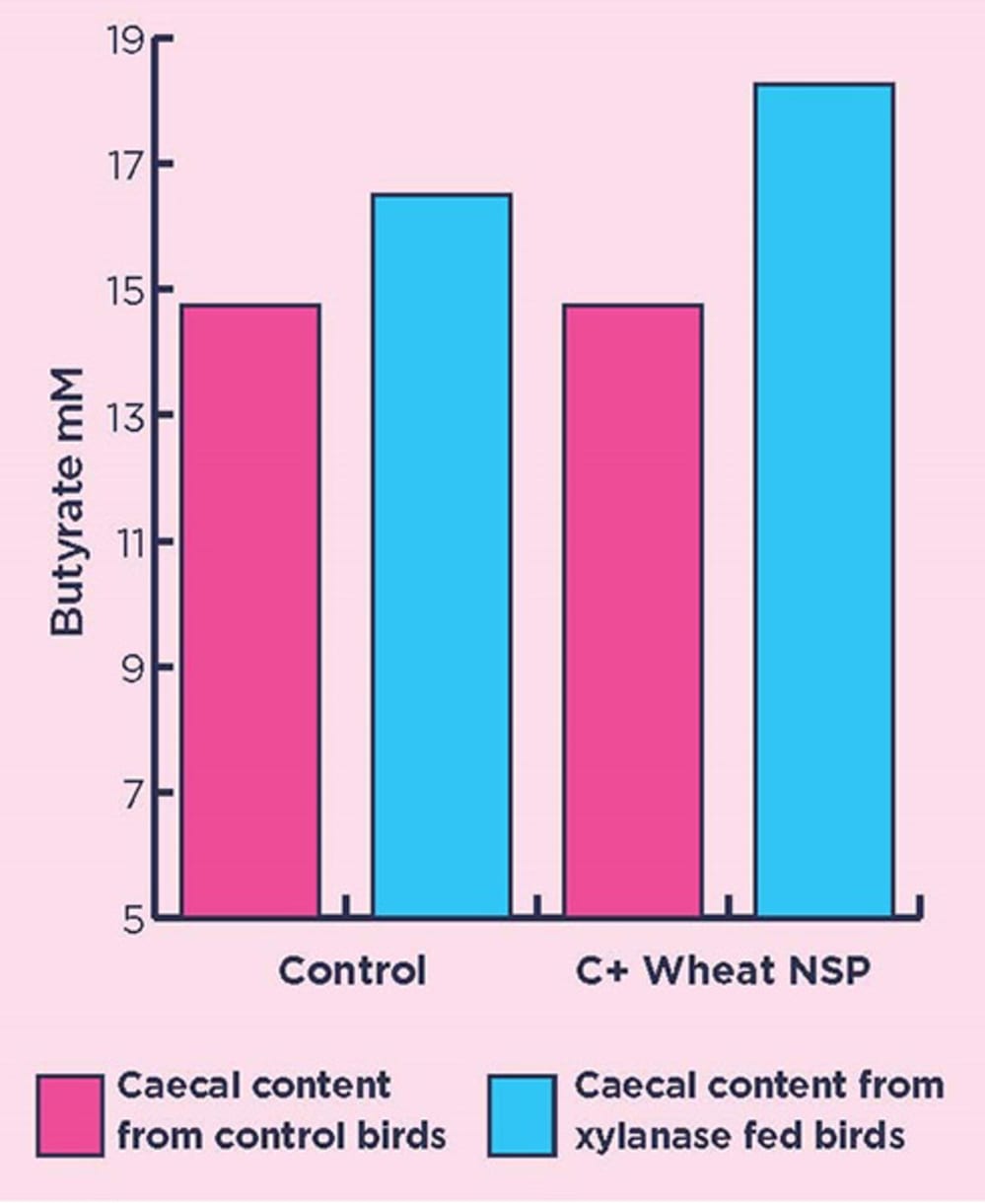‘Training’ the animal microbiome to degrade fibre: join us at IPPE to learn more!
Published Wednesday, 23rd January 2019Increased understanding of NSPase mode of action is presenting a new perspective on their role in nutritional strategies to improve performance. Join us at the International Production & Processing Expo (IPPE) in Atlanta, Georgia from February 12th to 14th to learn more.
Our team will be available each day in Hall A, Booth 949, where we’ll be showcasing new research – and unveiling a new paradigm in gut health.
Please see below for a research preview; we look forward to welcoming you to the booth at IPPE!
Fibre-degrading enzymes (NSPases) have been used commercially for more than 30 years.
Historically, much of the focus on NSPases was placed on reducing the anti-nutritive effects of fibre, now the focus is shifting towards their role in generating beneficial breakdown products of fibre.
As our Research Manager Dr Gemma Gonzalez Ortiz comments: “We know that some specific breakdown products of NSP are beneficial and play a role in adapting the intestinal microbiota, which in turn can boost fibre utilisation and performance.”
As the enzymes degrade the NSP fraction, short-chain oligosaccharides are produced; these are fermented by bacteria in the gut, giving rise to the production of short-chain fatty acids. This effect has been referred to as a prebiotic effect, and is regarded as one of the mechanisms for NSPase activity.
New research (Bedford and Apajalahti, 2018) explores how NSPase mode of action may be due to more than simply improving fibre digestibility and fermentation of the oligosaccharides generated. When fed over an extended period of time, dietary xylanase has been shown to effectively increase the capacity of bacteria inside the caeca to digest fibre. This suggests that xylanases have a “training” effect on the caecal microbiome, resulting in adaptive changes over time towards a greater capacity to degrade fibre (Figure 1). This means that NSPases are doing much more than previously thought – they contribute to the development of a more beneficial microbiota, subsequently enabling more efficient uptake of dietary nutrients by the host animal.
Figure 1: Caecal contents from birds fed diets with or without a a xylanase enzyme (Econase XT) were used as inoculum in a fermentation study to monitor volatile fatty acid (VFA) production. The caecal inoculum from birds pre-exposed to xylanase resulated in an increased butyrate production compared to control birds.
Our Research Director Dr Mike Bedford concludes: “We need to think of NSPases as tools to accelerate the ability of the gut microbiome to degrade fibre. Rather than quantitively degrading plant cell wall fibre, these enzymes are in effect increasing the intrinsic fibre-digesting capacity of the animal. This has significant implications with regard to selection of NSPase enzyme classes and dose rate.”
Latest news
Stay ahead with the latest news, ideas and events.

Online Feed Fibre Calculator
Calculate the percentage of dietary fibre in your feed
Our calculator is designed for nutritionists and uses averages of global raw materials to calculate the dietary fibre content (plus other more in-depth fibre parameters) of finished animal feed. These parameters are available within AB Vista’s Dietary Fibre analysis service (part of our NIR service).
Sign up for AB Vista news
A regular summary of our key stories sent straight to your inbox.
SUBSCRIBE© AB Vista. All rights reserved 2025
Website T&Cs Privacy & Cookie Policy Terms & Conditions of Sale University IDC policy Speak Up Policy

























